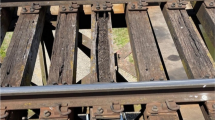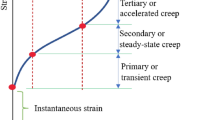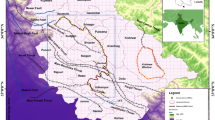Abstract
Long tunnel excavation with tunnel boring machine (TBM) is a complex and stochastic process. It is easily affected by uncertainties and needs to be adjusted according to specific geological conditions in different tunnel sections, which makes the construction scheduling and management difficult. Based on the rock mass classification, this paper estimates the penetration rate. Using the rate, a cyclic network simulation (CYCLONE) model of TBM boring system is established, and the advance rates under different geological conditions are determined. Then, the impact of different cutter head thrust, which is chosen in reasonable range according to previous experiences, on project schedule is analyzed. Moreover, the simulation model of mucking system is built to determine the number of muck trains and rail intersections reasonably, regarding the efficiency of muck loading and material transporting. Based on the interaction and interrelation between TBM boring system and mucking system, the combined CYCLONE model for the entire tunneling process is established. Then reasonable construction schedule, the utilization rate of working resources, and the probability of project completion are obtained through the model programming. At last, a project application shows the feasibility of the presented method.
Similar content being viewed by others
References
Shahriar Kourosh. Geotechnical risk assessment based approach for rock TBM selection in difficult ground conditions [J]. Tunnelling and Underground Space Technology, 2007, 23(3): 318–325.
Okubo S. Expert system for applicability of tunnel boring machines in Japan[J]. Rock Mechanics and Rock Engineering, 2003, 36(4): 305–322.
Gertscha R, Gertschb L, Rostami J. Disc cutting tests in Colorado Red Granite: Implications for TBM performance prediction[J]. International Journal of Rock Mechanics and Mining Sciences, 2007, 44(2): 238–246.
Barton N. TBM performance in rock based on Q TBM[J]. Tunnels and Tunnelling International, 1999, 31(9): 41–48.
Zhang Leshi, Zhang Guoliang, Wang Yu. TBM back up system research[J]. Water Resources and Hydropower Engineering, 2006, 37(3): 16–22 (in Chinese).
Wang Li, Zhang Yumin, Hou Zhi. Program of TBM muck trains[J]. Journal of Taiyuan University of Technology, 2000, 31(1): 47–49 (in Chinese).
Farmer I W, Glossop N H. Mechanics of disc cutter penetration[ J]. Tunnels and Tunneling International, 1980, 12: 622–625.
Bruland A. Hard Rock Tunnel Boring[D]. Norwegian University of Science and Technology, Trondheim, 1998.
Rostami J. Development of a Force Estimation Model for Rock Fragmentation with Disc Cutters Through Theoretical Modeling and Physical Measurement of Crushed Zone Pressure[D]. Department of Mining Engineering, Colorado School of Mines, Golden, Colorado, USA, 1997.
Sapigni M. TBM performance estimation using rock mass classifications[J]. International Journal of Rock Mechanics and Mining Sciences, 2002, 39: 771–778.
Nelson P P, Yousof A A, Laughton C. Improved strategies for TBM performance prediction and project management[ C]. In: RETC Proceedings. London, 1999. 963–979.
Benardos A G, Kaliampakos D C. Modelling TBM performance with artificial neural networks[J]. Tunnelling and Underground Space Technology, 2004, 19(6): 597–605.
Innaurato N, Oggeri C, Oreste P P et al. Experimental and numerical studies on rock breaking with TBM tools under high stress confinement[J]. Rock Mechanics and Rock Engineering, 2007, 40(5): 429–451.
Johannessen O. NTH Hard Rock Tunnel Boring[Z]. Project Report 1-94, NTH/NTNU Trondheim, Norway, 1994.
Ioannou P G. Geologic prediction model for tunneling[J]. Journal of Construction Engineering and Management, 1987, 113(4): 569–590.
Likhitruangslip V, Ioannou P G. Risk-sensitive decision support system for tunnel construction[C] In: ASCE Conference Proceedings on Geotechnical Engineering for Transportation Project. American Society of Civil Engineers, Los Angeles, USA, 2004. 1508–1515.
Author information
Authors and Affiliations
Corresponding author
Additional information
Supported by National Natural Science Foundation of China (No.50709024) and Program for New Century Excellent Talents in University (No. NCET-08-0391).
LIU Donghai, born in 1974, male, Dr, associate Prof.
Rights and permissions
About this article
Cite this article
Liu, D., Zhou, Y. & Jiao, K. TBM construction process simulation and performance optimization. Trans. Tianjin Univ. 16, 194–202 (2010). https://doi.org/10.1007/s12209-010-0035-0
Accepted:
Published:
Issue Date:
DOI: https://doi.org/10.1007/s12209-010-0035-0




